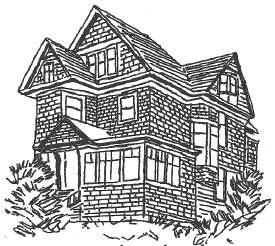New mural by Lauren Sinnott – “From Finland to Fort Bragg”
See Lauren’s detailed description from start to finish here.
complete with lots of pictures & videos
The mural is located on a south-facing wall in the alleyway off the 300 block of Franklin Street. It will depict one strand of Fort Bragg’s interwoven history: Finnish immigration during the late 1800s and early 1900s. These immigrants brought a strong tradition of cooperation for the common good. Along with providing basic necessities for their families and community, they wove a social network with plays, presentations, music and dance, organizing for causes, and enjoying refreshments together after a cleansing sauna.
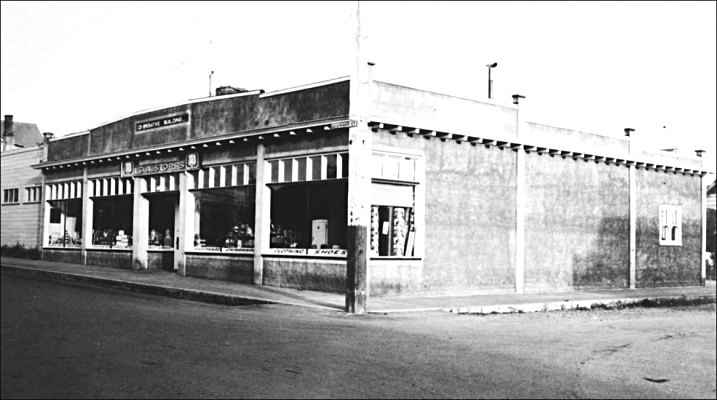
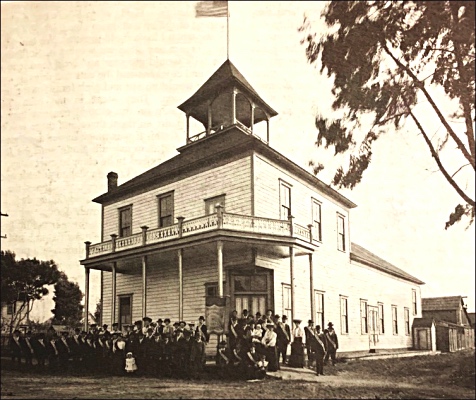
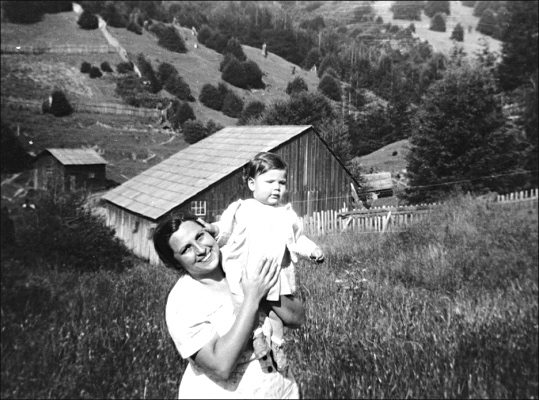
The wall painting will depict important locations and practices:
- The Fort Bragg Consumer Cooperative, founded in 1923 and by the early 1970s, apparently the longest functioning co-op in California. (It closed in 1974.) It exemplified farmer-nonfarmer cooperation within one association. Formed in 1923 by a group of Finnish sawmill workers and woodsmen, it was financially successful from the start.
- Kalevala Hall, originally the Finnish Temperance Hall, then home to the Kalevala Sisterhood established in 1896 and Brotherhood in 1897. It was a lively cultural center, with dances, musical programs, plays, lectures and mutual benefit organizing. Note the lone toddler in a white dress standing with all the adults in the photo of Kalevala Hall. I intend to include her! The much-changed building is still at 430 E. Redwood – now Lion’s Hall.
- Toveri Tupa, or “Comrades’ Hall” which was built by volunteers at 210 Corry Street in 1914. It was intended as a venue for Finnish drama, music, talks, and parties such as the progressive New Years Eve Ball. During WWII, it became the International Workers Order, Redwood Lodge No. 3893, and in 1946, the Fort Bragg Labor Temple for trade unions. In 1960, the building became home to the Fraternal Order of Eagles, dedicated to the arts and “the spirit of liberty, truth, justice, and equality, to make human life more desirable by lessening its ills, and by promoting peace, prosperity, gladness and hope.” Gloriana Opera performed for years in the hall, which sadly right now is for sale.
- Sointula Commune, which means “Place of Harmony” and was a 636-acre piece of logged, extremely hilly land 8 miles SE of Fort Bragg, jointly purchased by four Finnish families, who each had their own home, but shared barns, buildings, livestock, saunas and celebration.
- A sauna, with friends and families enjoying refreshments after their traditional steam bath.
These elements will be knit together with curving shapes and inscriptions. The mural needs to be fairly bold because it’s down an alleyway and must harmonize with Bojh Parker’s fabulous piece next to it!

— The title of the new mural is lettered at the top: From Finland to Fort Bragg
— At the bottom will be an inscription: “Finnish immigrants valued cooperation, equality, organized labor and connection to nature”
— The word Suomi in the upper left is the Finn’s own name for their country. It is the counterpart to California in the upper right.
— The looped square in each upper corner is a symbolic shape found in a number of cultures, including that of Finland. Called hannunvaakuna, it represented good fortune, luck, and warding off evil. And yes, the looped square symbol was the origin of the Command key on Apple devices!
— Beneath the looped square in the upper left will appear a stylized Finnish snow forest. This morphs into ice fog (yes, a thing – in arctic regions) and then into the shape of clouds and sky in the center.
— Beneath the looped square in the upper right appears a redwood forest, next to/part of the depiction of the sloped hillsides of Sointula Commune. The redwoods have swirling fog beneath them and to the left, morphing into those clouds in the center.
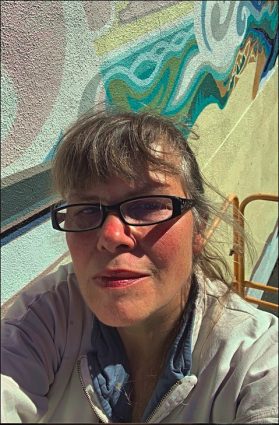
If you visit Fort Bragg, come see the progress! There are many murals going up under the auspices of the “Art for Alleyways” Program and supported by the Arts Council of Mendocino County. Unless you yourself live downtown, I’ll bet there will be some you haven’t seen before.
Part 2
for the Arts Council of Mendocino County
submitted October 2, 2022.
The portrait of Toveri Tupa is complete! This building is one of three architectural stars in my mural about the Finnish immigrants to Fort Bragg.
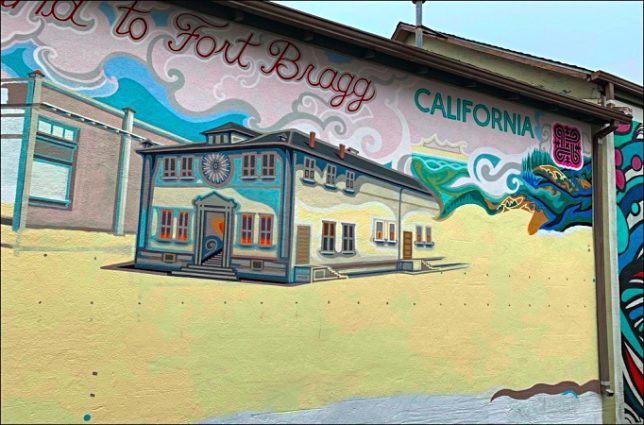
In 1914, members of the local Finnish branch of the Socialist Party of America built this 6,500 sq.ft. giant as a venue for drama, music, talks, and parties such as the progressive New Years Eve Ball. During WWII, it became the International Workers Order, Redwood Lodge No. 3893, and in 1946, the Fort Bragg Labor Temple for trade unions. In 1960, the building became home to the Fraternal Order of Eagles, dedicated to the arts and “the spirit of liberty, truth, justice, and equality, to make human life more desirable by lessening its ills, and by promoting peace, prosperity, gladness and hope.”
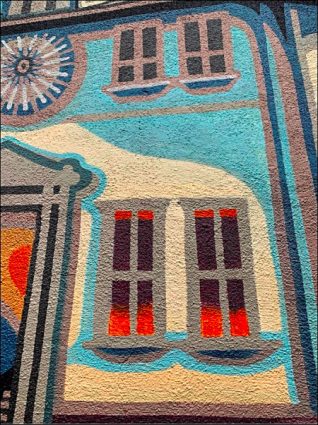
I painted the windows with a warm glow inside, indicating the hundreds of dances and balls, fundraisers, funeral services, plays and lectures, and other community events that took place there.
One of many remarkable events to take place in Comrades Hall was a presentation regarding the infamous Scottsboro trial in 1933, in which nine black boys were accused (falsely) of rape in Alabama. The series of trials and appeals illustrated extreme injustice and gradually the truth emerged. There was a presentation in this hall about the case, by Lester Carter ( a white youth who was an important defense witness), and Mrs. Jane Patterson (mother of one of the convicted boys).
Located at 210 Corry Street in Fort Bragg, the first photo shows Toveri Tupa or Comrades Hall, perhaps in the 1930s. The second photo shows it as it looks today. The rosette was at some point replaced with a simple disk.
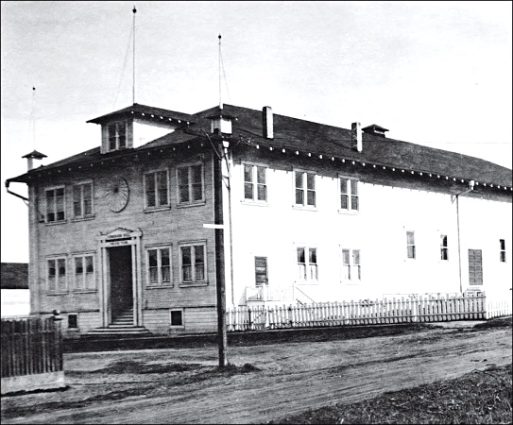
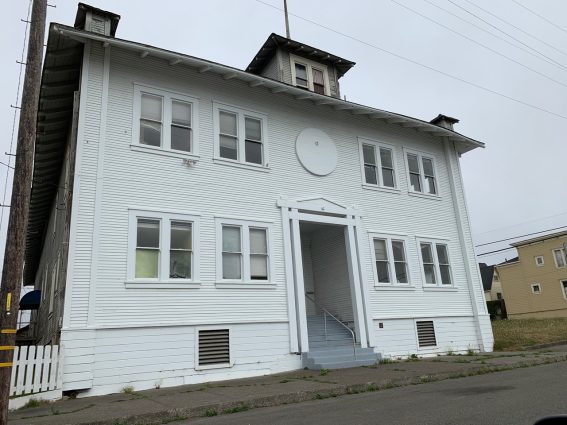
Now, the hall has just been purchased after the local Eagles chapter sadly suffered attrition. See that story here: https://mendovoice.com/2022/09/skunk-trains-new-boss-to-save-historic-finnish-lodge-as-residence-possible-future-hall-use/
All three of the buildings in the mural exemplify the strengths of Finnish-American society and its commitments to material autonomy and social justice.
